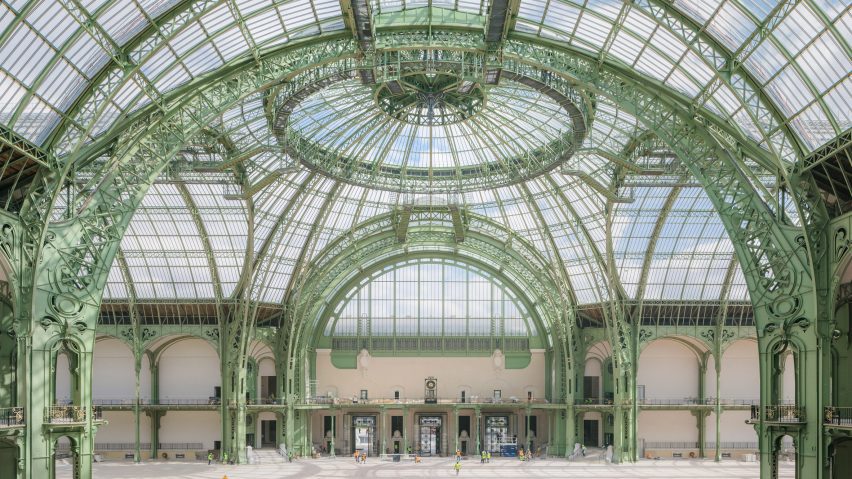
Chatillon Architectes completes Grand Palais restoration ahead of Paris Olympics
French studio Chatillon Architectes has completed its restoration of the vast glass-roofed atrium at the Grand Palais, which will host fencing and taekwondo at the Olympic Games in Paris this summer.
It marks the end of the first phase of renovation work at the landmark structure, carried out by Chatillon Architectes in time for the Paris 2024 Olympic Games.
The sporting event will be held in the revamped atrium, or nave, where swathes of glass and an expansive structure of over 6,000 tonnes of steel will serve as an intricate backdrop.
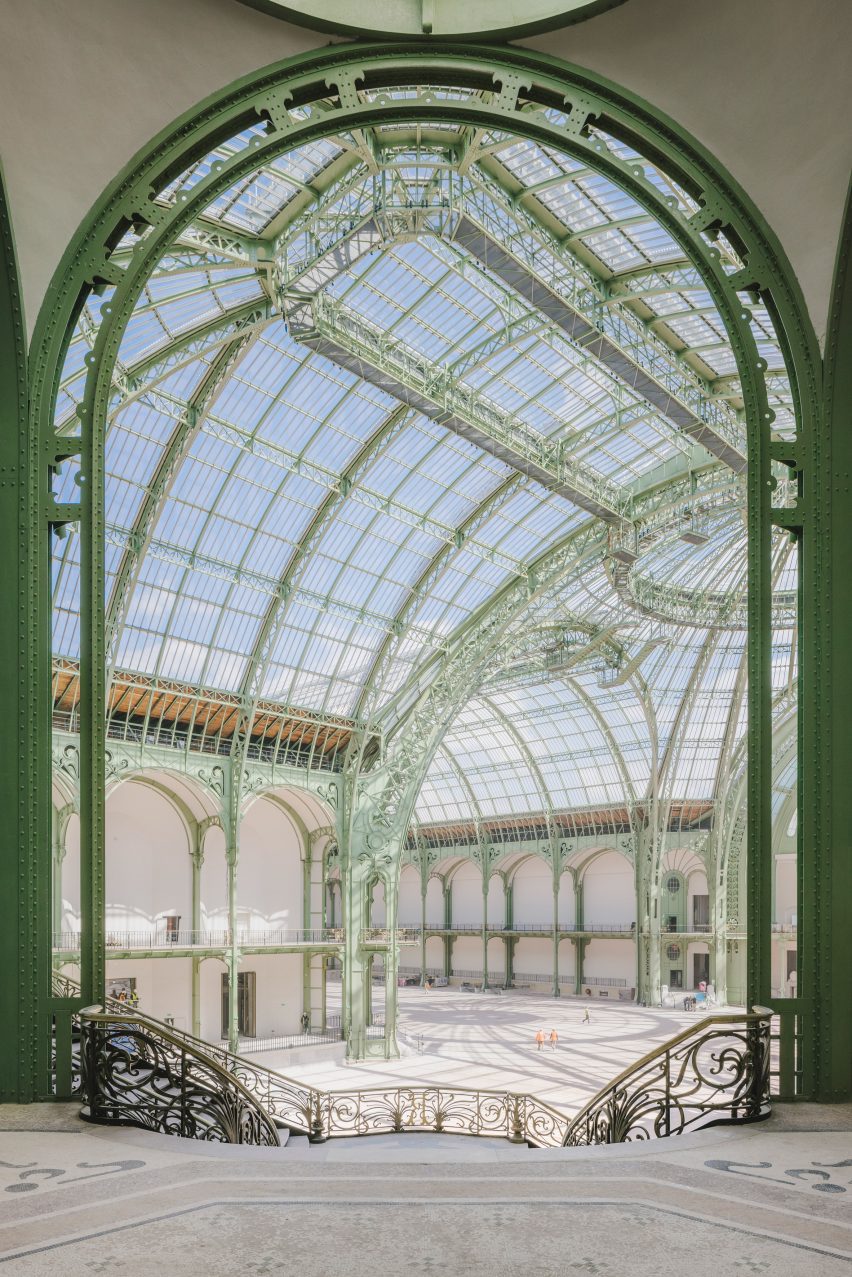
The Grand Palais has hosted many international exhibitions and events since it was constructed for the Paris Universal Exhibition in 1900. The overhaul by Chatillon Architectes is the first major restoration in the building's history.
According to the studio, the main ambition for the project was to improve accessibility after it had become "a monument that was often only observed from afar".
"It's the opportunity to return a permanent public use to the building, to redevelop the surrounding grounds, to connect the building back with the city, and to adapt it for the Olympics and future generations," Chatillon Architectes founder Francois Chatillon told Dezeen.
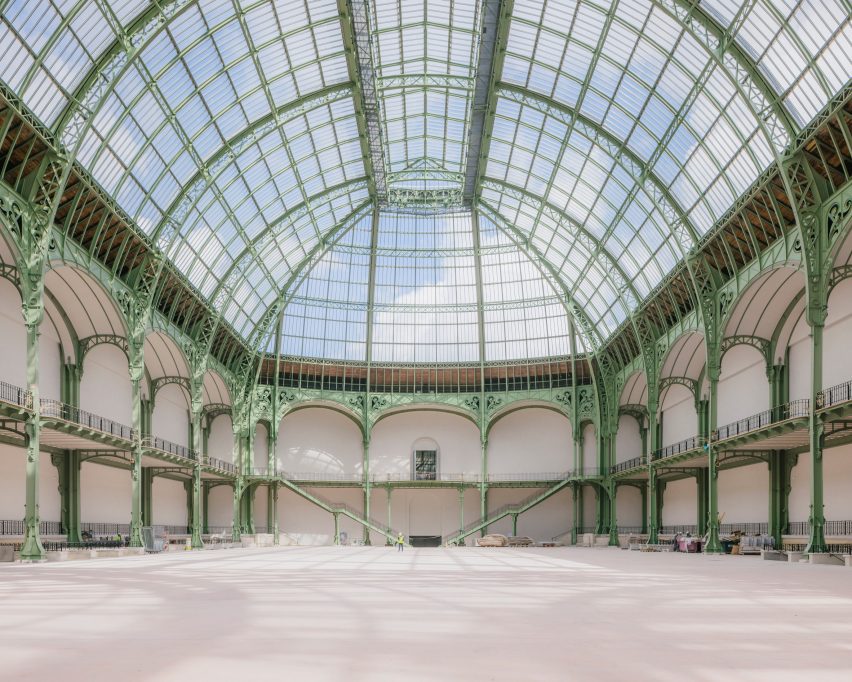
Chatillon Architectes also set out to preserve and celebrate as much of the original structure as possible, referencing the design by its architects Henri Deglane, Albert Louvet, Albert Thomas and Charles Girault.
"Our focus has always been to honour and restore the best of the building's past but not to do this blindly, we have approached the project with a contemporary mindset, ensuring that the building is prepared for its next phase of life and that, above all, it is a functioning building for modern society," said Chatillon during a tour of the building.
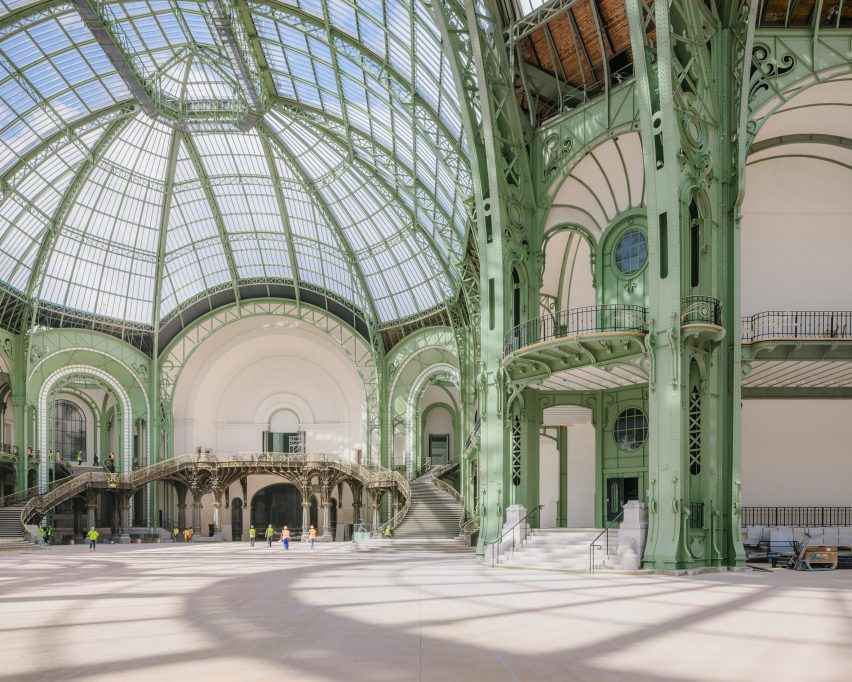
"The scale of the project is quite unbelievable, from the design stage to the construction," added Chatillon.
"We have explored thousands of archival documents to truly understand the building and its original intentions."
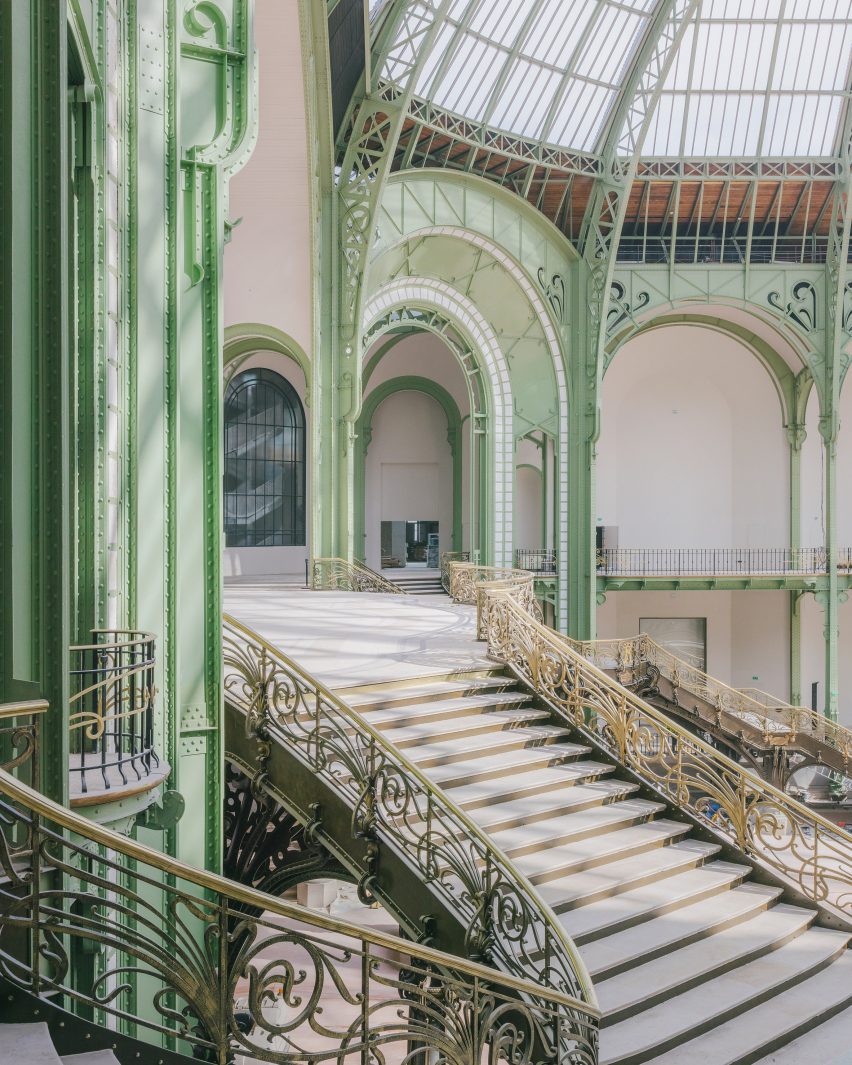
During the first phase of the project, changes to the 72,000-square-metre building have included reconnecting its three main spaces – including the nave – to restore the original central axis across its H‑shaped plan.
Areas previously inaccessible to the public have also been reopened by removing partition walls and integrating a sightseeing route within its plan.
The decorative balconies in the nave, which the studio said are among the earliest recorded cantilevers, have been reinforced and restored. Meanwhile, escape routes have been improved to increase the atrium's capacity by more than 60 per cent.
Throughout, technology and building services have been brought up to modern-day standards to ensure the Grand Palais' capability as a contemporary exhibition and events venue.
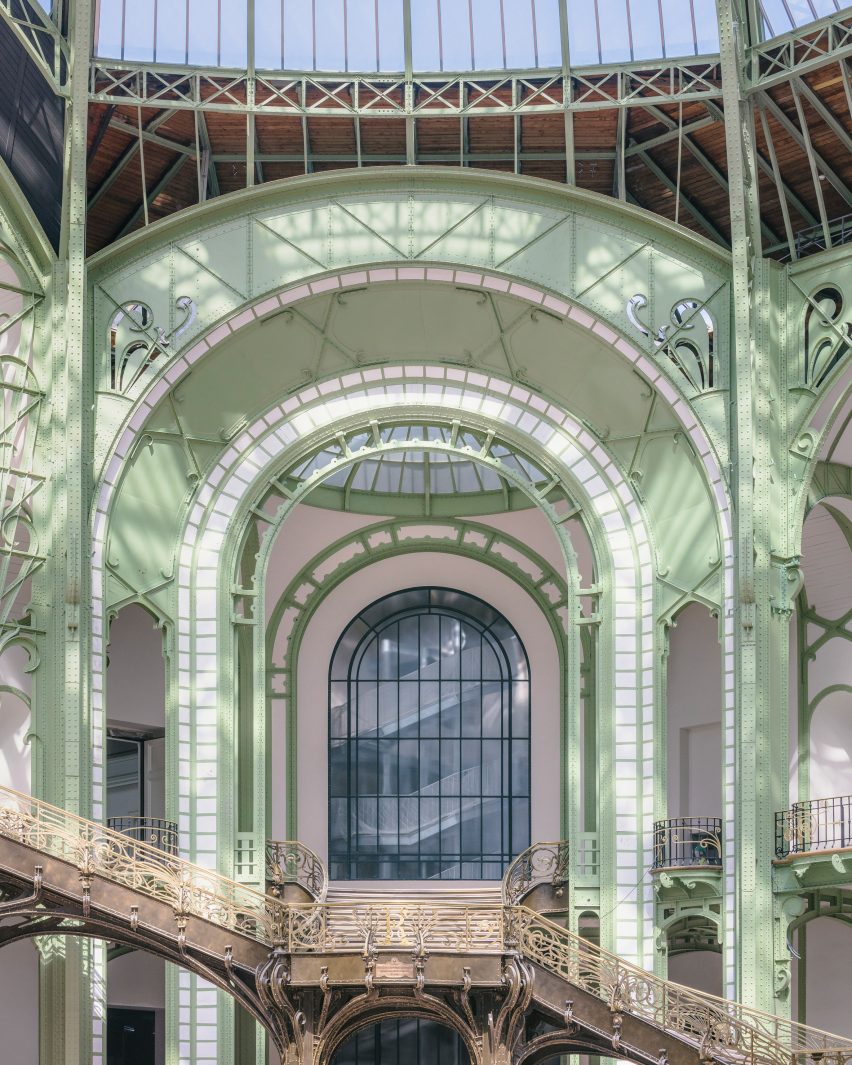
Completing the first phase are improvements to the landscaping surrounding the building, which have been carried out to enhance its connection to the Champs-Élysées.
Though not photographed, 60,000 plants have been introduced to its lawns in curved beds and paths that emulate those on the famous Parisian avenue.
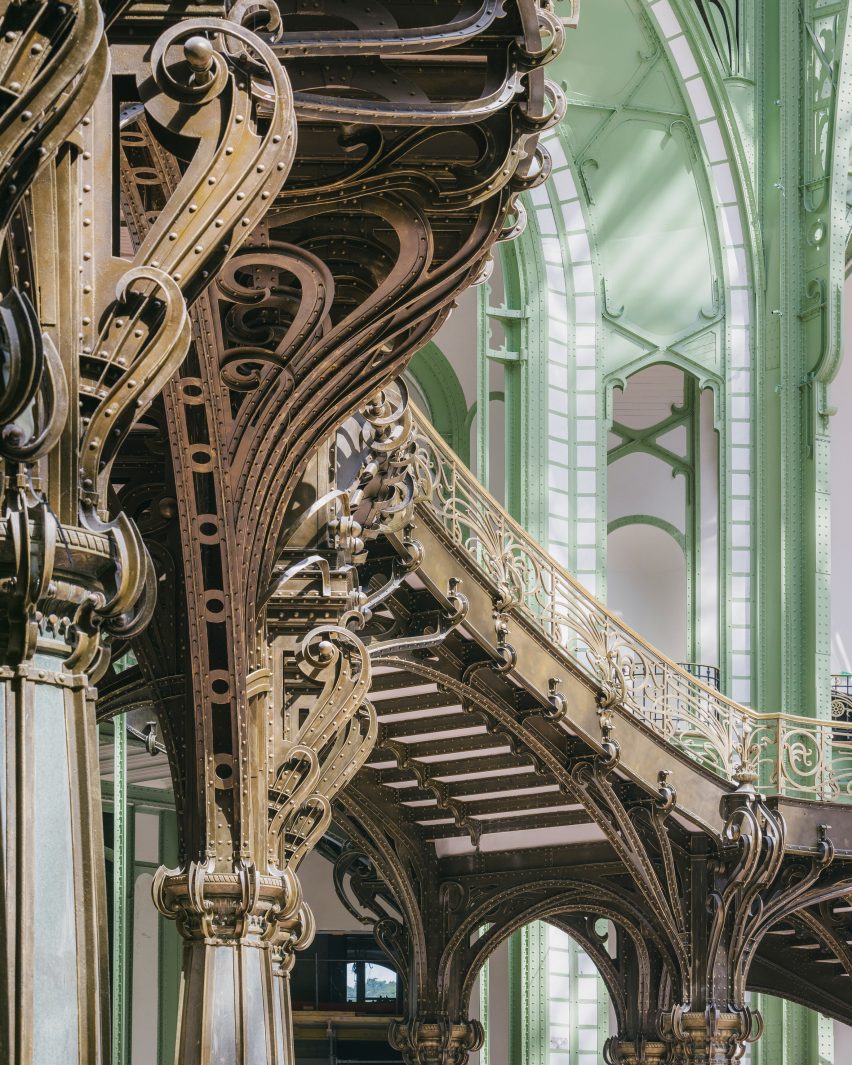
The complete reopening of the Grand Palais as a sporting and cultural events venue is scheduled for 2025 when the Centre Pompidou is expected to move into its galleries while it undergoes its own renovation.
Elsewhere in the city, VenhoevenCS and Ateliers 2/3/4 recently completed the Aquatics Centre in time for the Paris 2024 Olympic Games. It is the only permanent building constructed for the event, which will largely take place in existing buildings and temporary venues across the city.
Ahead of the Olympic Games, Brenac & Gonzalez & Associés also recently completed a trio of apartment blocks for Athletes' Village and Concepto and Studio 5.5 installed 350 street lights made from salvaged scaffolding poles and lampposts.
The photography is by Laurent Kronental.